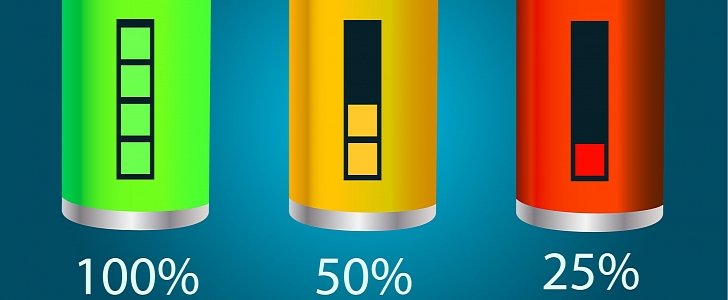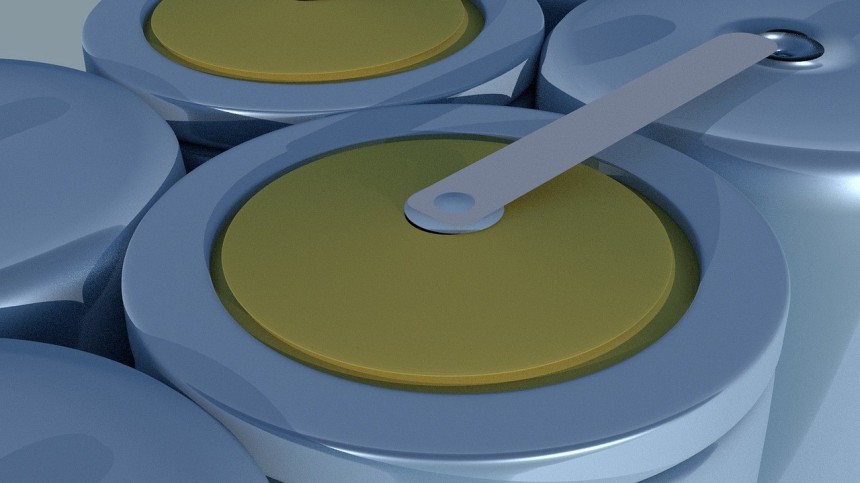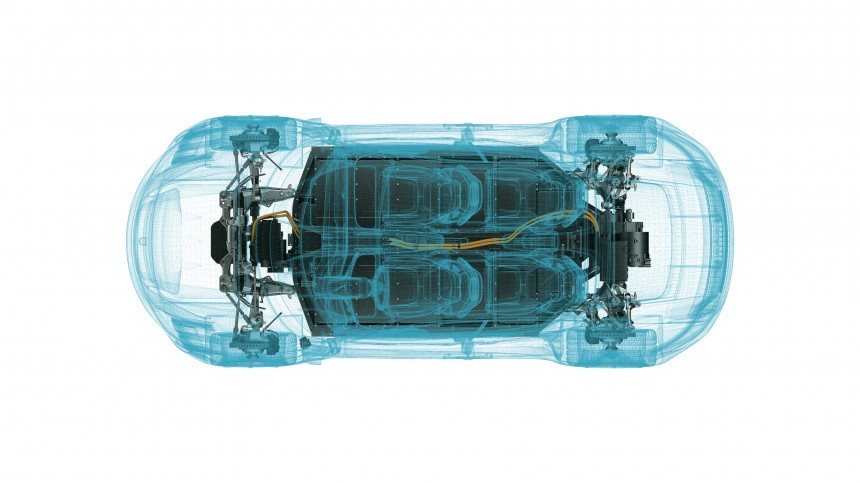It's not exactly a mystery that batteries don't go very well with extreme temperatures, whether hot or cold, but have you ever wondered about the exact reasons behind their inadequacies? We have, and it turns out that they haven't evolved as much as carmakers are implying in recent years.
A first conclusion would be that virtually all companies that offer a battery-powered vehicle nowadays are way behind in technology and not that many people seem to want to talk about it.
The advent of the electric car era is effectively already here, and despite massively increasing EV sales we are still using battery technologies not much unlike the one discovered by Alessandro Volta about 220 years ago.
Just like homo sapiens, a modern battery can deliver 100 percent of its capacity at moderate temperatures, mostly revolving around 20 degrees Celsius (68 Fahrenheit). By the way, humans being used as batteries in the Matrix universe were not just a plot gimmick, there's actually some science behind it.
If the ambient temperature of a battery that does its best at 20 degrees Celsius is increased to 30 degrees, its performance efficiency will reduce by about 20 percent. If it's continuously charged and recharged at 45 degrees C (113 F), the performance loss can rise to a whopping 50 percent. Keep in mind that these numbers don't necessarily translate into lost driving range on an electric car, though.
That being said, battery-powered vehicles don't exist in a void and their temperature can be influenced by a wide array of external and even internal factors, which is why some, but not all, modern carmakers have integrated temperature management systems on their EVs. Albeit sucking their own fair share of energy, these systems help regulate battery temperature to optimize their long-term capacity and short-term performance at the same time.
Sadly, not even these management systems are enough when the exterior temperature drops dramatically, which is why batteries becoming slugging during harsh winters are almost like an inherent feature in all modern EVs and any other battery-powered device.
Well, Lithium-ion batteries, which comprise most of EV power sources on the road today, don't really like to work extra hard in extreme temperatures either, and even less so when it's freezing. On the plus side, they do fare much better than old-school lead-acid or NiMh batteries, but the problem still exists and not a single mainstream carmaker has strayed from offering almost the same type of flawed technology. On that bombshell, we should probably dive into the technical stuff.
Since most current hybrids, plug-in hybrid and fully electric cars have switched to Lithium-ion as the weapon choice, we decided to concentrate on how Li-ion works in cold temperatures. Before that, let's first see how modern batteries actually work.
Chosen on a large scale mainly because they have an energy density that exceeds rival battery chemistries about two and a half times, modern Li-ion batteries can offer about 150 Wh per kilogram of weight. This means that they can be smaller and lighter than competing products, which is one of their main positive features.
They generally contain a graphite anode, a lithium cobalt oxide cathode, which can be substituted for either nickel or manganese, and a liquid carbonate electrolyte with a type of dissolved lithium salt.
When the battery is being discharged, lithium ions move from the graphite anode to the cathode in a so-called intercalation process that includes the movement of electrons in the same direction by using an external circuit. In the reverse charging process, lithium ions from the cathode diffuse back to the graphite anode, accompanied by the same electrons using the external circuit.
Using smaller words, this is an electrochemical reaction that needs a number of variables to be constant in order to be efficient all the time, otherwise, it can slow down, terminate or even develop permanent electrical shorts in some of the battery cells.
In low temperatures, performance drops significantly because the chemical reaction is simply slowed down, but only when it comes to discharging the battery. Li-ion batteries can actually power an EV at - 40 degrees Celsius (- 40 Fahrenheit), albeit with a reduced discharge rate and only if they are fitted with thermal management systems, but there is simply no way you will be able to charge them at those temperatures because they simply slow down too much.
While effectively all batteries are bad in cold-weather by design, work is being done so that the future will bring us much better tech to counteract their inherent drawbacks. A little over two centuries have passed since Alessandro Volta first discovered the voltaic pile - or the first somewhat modern battery.
From 0 to 220 volts in 220 years sounds like a rather poor acceleration figure, which is one of the reasons why Porsche is the first carmaker to build an electric car around an 800-volt architecture. The higher voltage essentially means slimmer wiring, which translates into more consistent performance, reduced charging times, decreased weight and less space occupied inside the car.
That said, the Taycan is also stuck with a soon-to-be archaic Li-ion battery, but Porsche is among the multitude of carmakers who are constantly researching improvements. Among the most promising are related to the utilization of battery electrolytes comprising ionic liquids, which are essentially just salts that are molten at low to moderate temperatures. Unlike other electrolytes, they are non-flammable and possess thermal stability in much higher temperatures.
Other areas of battery research alternatives involve Li-air designs, which use the oxygen in the atmosphere as the oxidizing agent, making them a lot lighter than current Lithium-ion chemistries. On top of it, their specific energy is comparable to that of gasoline, making them perfect for our future performance EVs.
With an even better specific energy output, Li-sulphur batteries are probably the best bet for truly revolutionary future batteries, but their development is still at a very early phase. Until that time comes we are all stuck with a 30-year old technology that has been updated mainly regarding costs, not cold-weather performance.
The advent of the electric car era is effectively already here, and despite massively increasing EV sales we are still using battery technologies not much unlike the one discovered by Alessandro Volta about 220 years ago.
Just like homo sapiens, a modern battery can deliver 100 percent of its capacity at moderate temperatures, mostly revolving around 20 degrees Celsius (68 Fahrenheit). By the way, humans being used as batteries in the Matrix universe were not just a plot gimmick, there's actually some science behind it.
If the ambient temperature of a battery that does its best at 20 degrees Celsius is increased to 30 degrees, its performance efficiency will reduce by about 20 percent. If it's continuously charged and recharged at 45 degrees C (113 F), the performance loss can rise to a whopping 50 percent. Keep in mind that these numbers don't necessarily translate into lost driving range on an electric car, though.
That being said, battery-powered vehicles don't exist in a void and their temperature can be influenced by a wide array of external and even internal factors, which is why some, but not all, modern carmakers have integrated temperature management systems on their EVs. Albeit sucking their own fair share of energy, these systems help regulate battery temperature to optimize their long-term capacity and short-term performance at the same time.
Sadly, not even these management systems are enough when the exterior temperature drops dramatically, which is why batteries becoming slugging during harsh winters are almost like an inherent feature in all modern EVs and any other battery-powered device.
Well, Lithium-ion batteries, which comprise most of EV power sources on the road today, don't really like to work extra hard in extreme temperatures either, and even less so when it's freezing. On the plus side, they do fare much better than old-school lead-acid or NiMh batteries, but the problem still exists and not a single mainstream carmaker has strayed from offering almost the same type of flawed technology. On that bombshell, we should probably dive into the technical stuff.
The Magical Chemistry Behind the Curtains
Chosen on a large scale mainly because they have an energy density that exceeds rival battery chemistries about two and a half times, modern Li-ion batteries can offer about 150 Wh per kilogram of weight. This means that they can be smaller and lighter than competing products, which is one of their main positive features.
They generally contain a graphite anode, a lithium cobalt oxide cathode, which can be substituted for either nickel or manganese, and a liquid carbonate electrolyte with a type of dissolved lithium salt.
When the battery is being discharged, lithium ions move from the graphite anode to the cathode in a so-called intercalation process that includes the movement of electrons in the same direction by using an external circuit. In the reverse charging process, lithium ions from the cathode diffuse back to the graphite anode, accompanied by the same electrons using the external circuit.
Using smaller words, this is an electrochemical reaction that needs a number of variables to be constant in order to be efficient all the time, otherwise, it can slow down, terminate or even develop permanent electrical shorts in some of the battery cells.
In low temperatures, performance drops significantly because the chemical reaction is simply slowed down, but only when it comes to discharging the battery. Li-ion batteries can actually power an EV at - 40 degrees Celsius (- 40 Fahrenheit), albeit with a reduced discharge rate and only if they are fitted with thermal management systems, but there is simply no way you will be able to charge them at those temperatures because they simply slow down too much.
From 0 to 200 Volts in 220 Years
From 0 to 220 volts in 220 years sounds like a rather poor acceleration figure, which is one of the reasons why Porsche is the first carmaker to build an electric car around an 800-volt architecture. The higher voltage essentially means slimmer wiring, which translates into more consistent performance, reduced charging times, decreased weight and less space occupied inside the car.
That said, the Taycan is also stuck with a soon-to-be archaic Li-ion battery, but Porsche is among the multitude of carmakers who are constantly researching improvements. Among the most promising are related to the utilization of battery electrolytes comprising ionic liquids, which are essentially just salts that are molten at low to moderate temperatures. Unlike other electrolytes, they are non-flammable and possess thermal stability in much higher temperatures.
Other areas of battery research alternatives involve Li-air designs, which use the oxygen in the atmosphere as the oxidizing agent, making them a lot lighter than current Lithium-ion chemistries. On top of it, their specific energy is comparable to that of gasoline, making them perfect for our future performance EVs.
With an even better specific energy output, Li-sulphur batteries are probably the best bet for truly revolutionary future batteries, but their development is still at a very early phase. Until that time comes we are all stuck with a 30-year old technology that has been updated mainly regarding costs, not cold-weather performance.

















